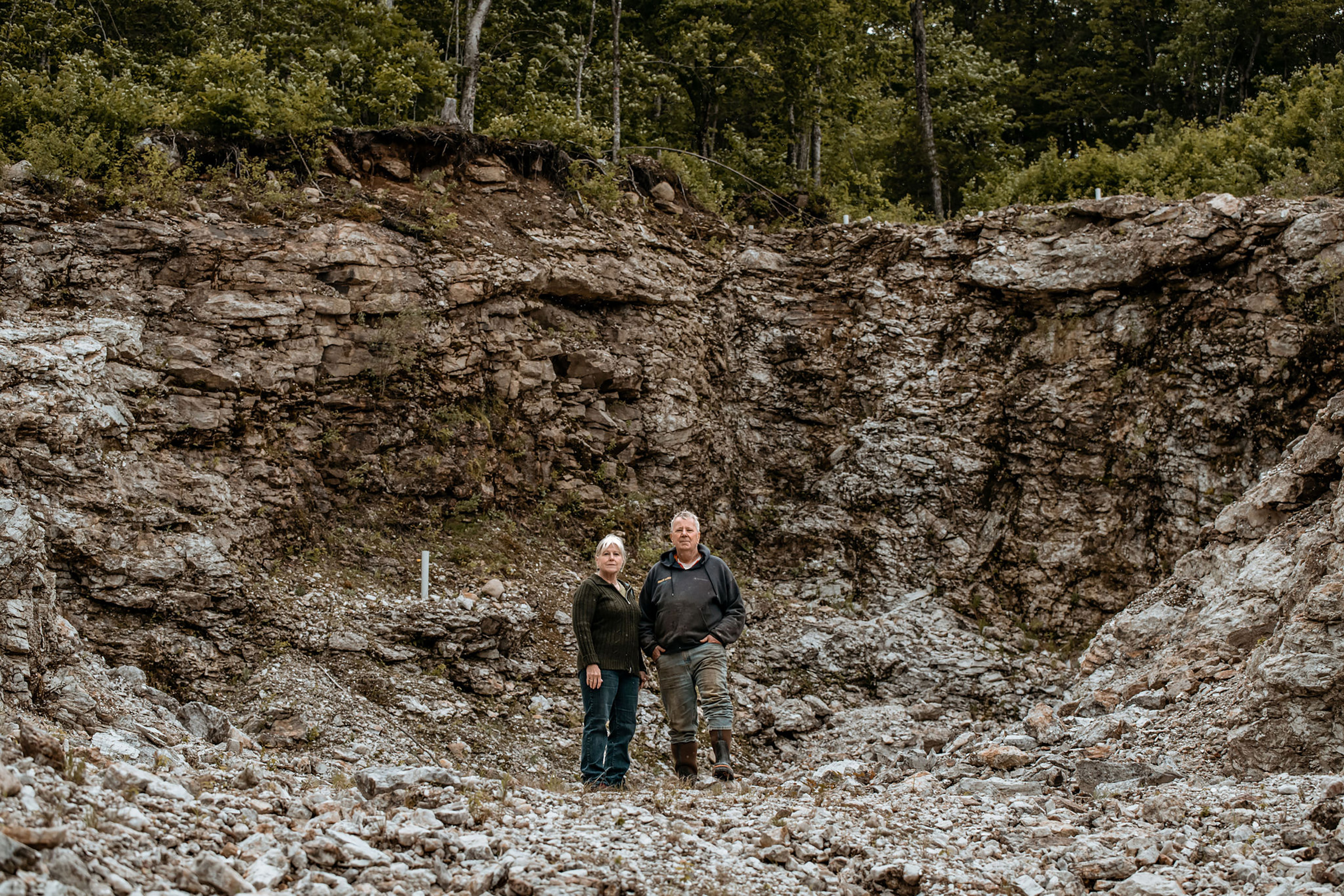This story was published in partnership with The Maine Monitor, a nonprofit and nonpartisan news organization. To get regular coverage from the Monitor, sign up for a free Monitor newsletter here.
The world’s richest known lithium deposit lies deep in the woods of western Maine, in a yawning, sparkling mouth of white and brown rocks that looks like a landslide carved into the side of Plumbago Mountain.
Mary Freeman and her husband Gary found the deposit five years ago while hunting for tourmaline, a striking, multi-colored gemstone found in the region.
The Freemans make their living selling lab supplies through the Florida-based company they founded 40 years ago, Awareness Technology. But their true love is digging for gemstones, which has brought them for years to Mary’s home state of Maine, the site of some of the best tourmaline hunting in the world.
More from TIME
Since 2003, they’ve been buying up property parcels, studying core samples and old geological maps to determine where to try digging next, then spending hundreds of thousands of dollars a year on blasting and equipment. The couple has dug more than a mile of tunnels in pursuit of beautiful stones, and many of their finds—like blue elbaite and rich watermelon tourmaline—have wound up on display at the Maine Mineral & Gem Museum in nearby Bethel.


Now, the Freemans want to expand this pit, near the town of Newry, Maine, so they can mine spodumene, crystals that contain the lithium the U.S. needs for the clean energy transition. The timing of their discovery, in what has been named Plumbago North, is remarkable; the Freemans have stumbled across one of the only hard-rock sources of lithium in the U.S. at a time when the material is desperately needed for the clean energy transition. By 2040, the world will need at least 1.1 million metric tons of lithium annually, more than ten times what it currently produces, according to projections by the International Energy Agency. Should the Maine deposit be mined, it could be worth as much as $1.5 billion, a huge windfall for the Freemans and a boon to the Biden Administration’s efforts to jumpstart more domestic mining, processing, and recycling of critical minerals such as lithium, cobalt, and rare earth elements to reduce the U.S.’ dependence on China. This is one of the few lithium deposits in the U.S. currently found in hard rock, which means it is higher-quality and faster to process than lithium mined from brine.
“I consider myself an environmentalist,” says Mary, who on a recent rainy visit to the test quarry, was wearing jeans, a sweater, and hiking boots, her white hair pulled into a low ponytail. Most of the country’s critical minerals are mined elsewhere and processed in China, she adds. “I think [the U.S.] should try to be a little bit more self-sufficient.”
Read more: Lithium Is Key to the Electric Vehicle Transition. It’s Also in Short Supply
But like just about everywhere in the U.S. where new mines have been proposed, there is strong opposition here. Maine has some of the strictest mining and water quality standards in the country, and prohibits digging for metals in open pits larger than three acres. There have not been any active metal mines in the state for decades, and no company has applied for a permit since a particularly strict law passed in 2017. As more companies begin prospecting in Maine and searching for sizable nickel, copper, and silver deposits, towns are beginning to pass their own bans on industrial mining.
“This is a story that has been played out in Maine for generations,” says Bill Pluecker, a member of the state’s House of Representatives, whose hometown of Warren—a 45-minute drive from the capital city of Augusta—recently voted overwhelmingly in favor of a temporary ban on industrial metal mining after a Canadian company came looking for minerals near a beloved local pond. “We build industries based on the needs of populations not living here and then the bottom drops out, leaving us struggling again to pick up the pieces.”
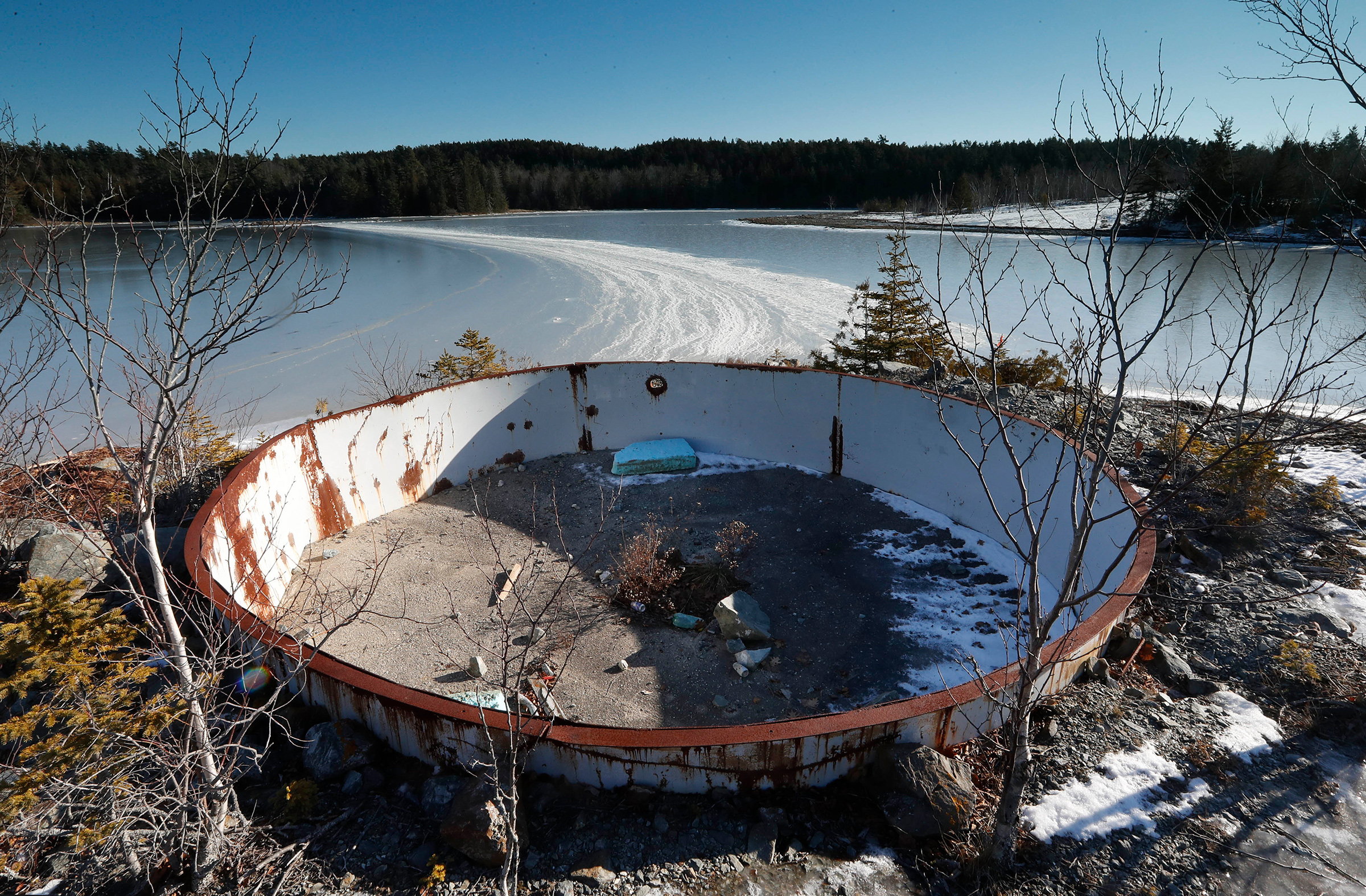
Mainers often invoke the Callahan Mine in the coastal town of Brooksville as a warning. Tailings from the mine, which operated for several years in the late 1960s, were disposed of in a pile next to a salt marsh and creek. The former mine is now a Superfund site, and a 2013 study by researchers at Dartmouth College found widespread evidence of toxic metals in nearby sediment, water and fish. Cleanup costs, borne by taxpayers, are estimated between $23 million and $45 million.
“Our gold rush mentality regarding oil has fueled the climate crisis,” says State Rep. Margaret O’Neil, who presented a bill last session that would have halted lithium mining for five years while the state worked out rules (the legislation ultimately failed). “As we facilitate our transition away from fossil fuels, we must examine the risks of lithium mining and consider whether the benefits of mining here in Maine justify the harms.”
The Freemans’ point out that they plan to dig for the spodumene, then ship it out of state for processing, so there would be no chemical ponds or tailings piles. They liken the excavation of the minerals to quarrying for granite or limestone, which enjoys a long, rich history in Maine.
Advocates for mining in the U.S. argue that, since the country outsources most of its mining to places with less strict environmental and labor regulations, those harms are currently being born by foreign residents, while putting U.S. manufacturers in the precarious position of depending on faraway sources for the minerals they need. Though there are more than 12,000 active mines in the U.S., the bulk of them are for stone, coal, sand, and gravel.
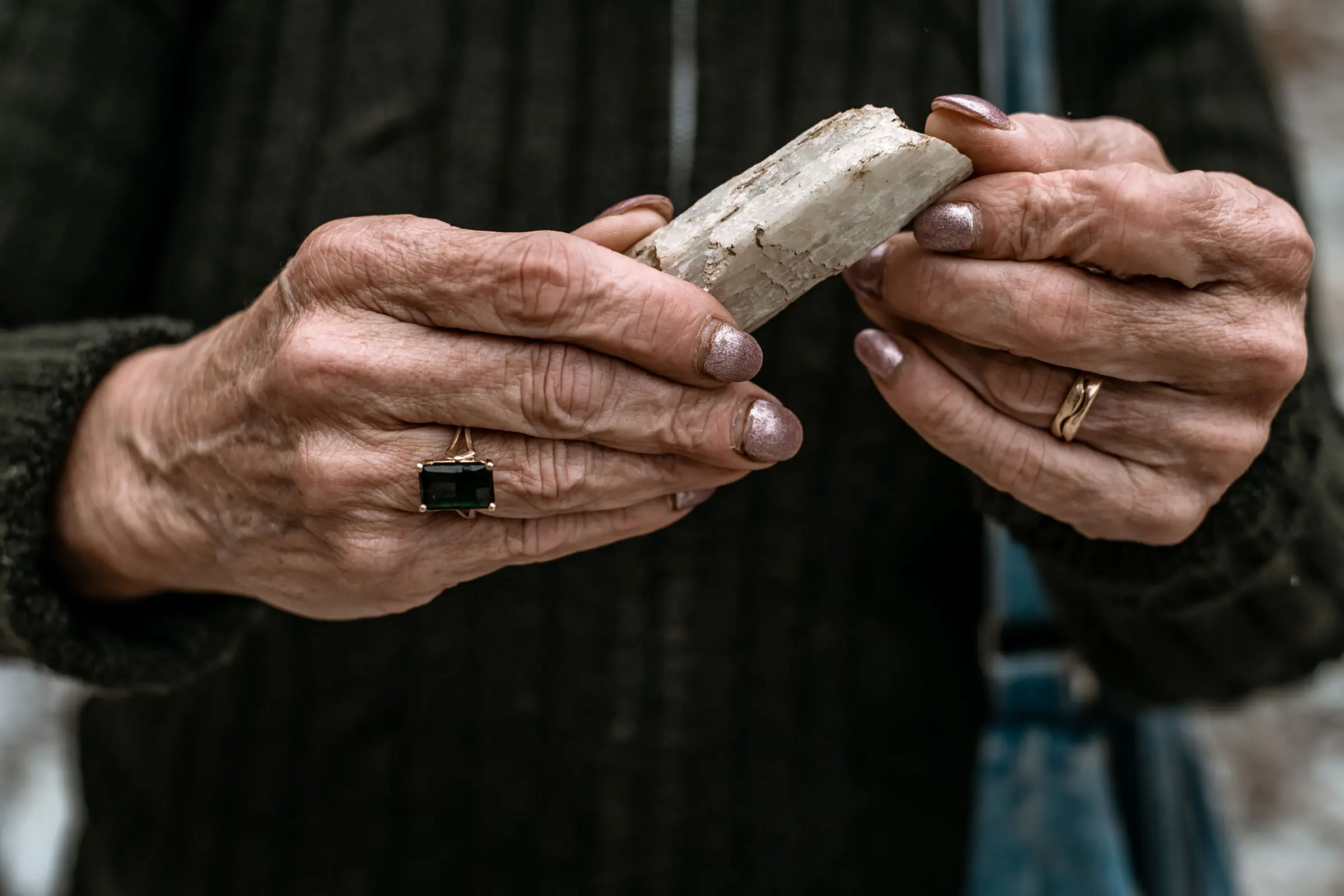
There is only one operational lithium mine in the U.S., in Nevada, and one operational rare earth element mine, in Mountain Pass, Calif., meaning that the U.S. is dependent on other countries for the materials essential for clean energy technologies like batteries, wind turbines, and solar panels. Even after they’re mined, those materials currently have to be shipped to China for processing since the U.S. does not have any processing facilities.
“If we’re talking about critical metals and materials, we’re so far behind that it’s crazy,” says Corby Anderson, a professor at the Colorado School of Mines. “It’s the dichotomy of the current administration—they have incentives for electric vehicles and all these things, but they need materials like graphite, manganese, nickel, cobalt, lithium, and copper. The only one we mine and refine in this country is copper.”
The COVID-19 pandemic laid bare the problems of faraway supply chains; as U.S. consumers shopped online in their homes, the goods they bought, mostly from Asia, experienced lengthy delays at clogged ports. What’s more, diplomatic tensions with China motivated the U.S. government to seek other potential sources for mining, material processing, and recycling.
That’s why, in the pandemic’s aftermath, the Biden Administration launched an initiative to secure a Made in America supply chain for critical minerals. It included billions in funding for companies trying to mine and process critical minerals domestically.

The rocks in Plumbago North would seem to help provide a domestic supply chain for critical minerals; they are thought to be among the largest specimens of spodumene ever found, with crystals of such high quality that in addition to batteries, they could be used to make scientific glassware or computer screens, where the lithium metal would help lower the melting temperature.
The Freemans are just two of the hundreds of people prospecting for critical materials across the country as the U.S. tries to strengthen the domestic supply chain. According to an analysis by Patrick Donnelly, the Great Basin Director for the Center for Biological Diversity, a nonprofit environmental organization, more than 100 companies have staked claims for lithium deposits in the American West. Companies also have applied for permits to mine cobalt in Idaho, nickel and copper in Minnesota, and lithium in North Carolina.
Geologists say there’s also likely a lot more lithium in spodumene deposits across New England. Communities that haven’t had working mines in years may soon find themselves a key source for lithium and other minerals needed for car batteries, solar panels, and many of the objects people will need more of to transition themselves off polluting fossil fuels.
There are good reasons for U.S. communities to have healthy skepticism about mining projects; there is no shortage of examples of a company coming into a community, mining until doing so becomes too expensive, then leaving a polluted site for someone else to clean up. There are more than 50,000 abandoned mines in the western United States alone, 80% of which still need to be remediated. Passage of landmark environmental laws like the Clean Air Act of 1970 and the Clean Water Act of 1972 hasn’t made mining safe enough, environmentalists say.

“All mines pollute in one way or another, and mines are really bad at predicting how much they’re going to pollute,” says Jan Morrill, who studies mining at the environmental group Earthworks, which recently found that 76% of mining companies in the U.S. polluted groundwater after saying they wouldn’t.
One of the most problematic parts of mines is the tailings, or waste, Morrill says: Companies extract the minerals they need, then are left with a giant pile of rock, liquid, and chemicals that they store in ponds or behind dams that sometimes prove unstable. These tailings have caused landslides, excessive dust, and water pollution; more than 300 mine tailing dams have failed worldwide over the last century, according to Christopher Sergeant, a research scientist at the University of Montana.
It is not uncommon for tailings to leak into water, in fact, there is a permit that mine owners can get in case they find their projections were wrong and they need to discharge into U.S. waters.
Even “modern mines” that adhere to the latest U.S. standards—which are among the strictest in the world—still pollute, Earthworks has found. Though there are, theoretically, non-polluting ways to store mine tailings, doing so is much more expensive and mine operators have largely not paid to do so, Morrill says. That’s because, says Aimee Boulanger, executive director of the Initiative for Responsible Mining Assurance, “laws and markets have not fully incentivized companies to do that.”
Indeed, the Biden initiative to increase domestic mining includes, for example, a $700 million loan for Ioneer, a company planning a lithium mine on Rhyolite Ridge in Nevada, where environmental groups say the mine, as proposed, would cause the extinction of an endangered species called Tiehm’s buckwheat. The Administration is also spending $115 million to help Talon Nickel build a battery minerals processing facility in North Dakota, but the potential mine they would source from, in Minnesota, is opposed by Indigenous groups and environmentalists who fear it could contaminate wells in the area.
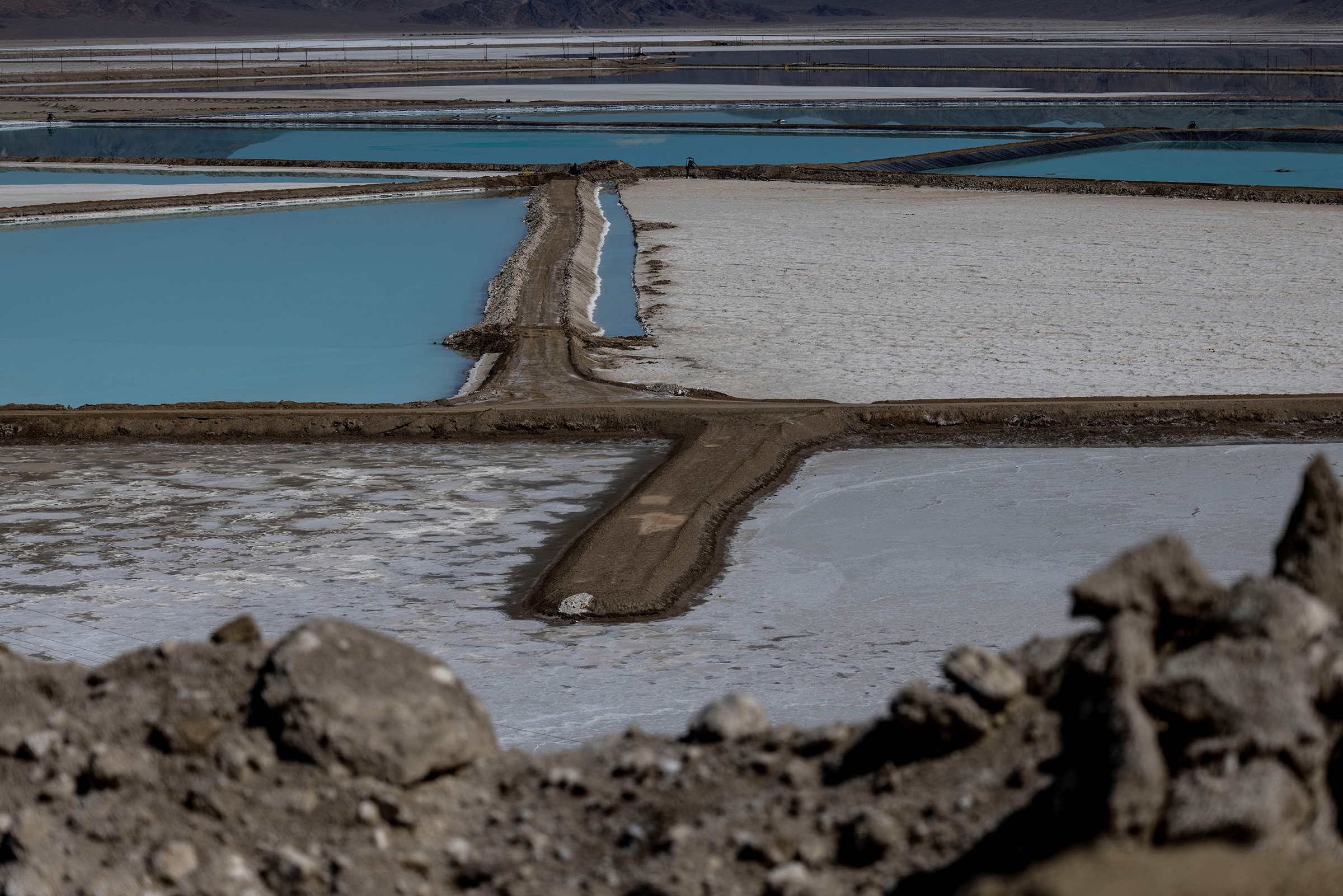
Still, the U.S. has a more rigorous regulatory environment than many other countries, she says, and there are domestic mines that even some environmentalists support, like the Stillwater Mine in Montana. Community organizations there signed a Good Neighbor Agreement in 2000 with the Sibanye-Stillwater Mining Company allowing the firm to extract platinum and palladium—while also establishing clear and enforceable water standards, restrictions to minimize local traffic, and third-party auditors to ensure the mine adheres to the standards it set out. The mine is now one of the top employers and private-sector income generators in Montana.
But advocates had to force the Agreement; three grassroots organizations sued to stop the construction of the mine, and after a year of negotiations, the mining company and grassroots groups agreed to the contract instead of going to court. With support from elected officials trying to find ways to mine more critical minerals in the U.S., companies may not feel the need to make similar promises to the local community.
Read more: What Would Happen if South America Formed an OPEC for Lithium
Environmental concerns aren’t the only problem with mining, Morrill says. The history of mining in the U.S. is linked to colonialism; Christopher Columbus was looking for gold when he stumbled across North America, and as Europeans expanded into the continent, they took land from Indigenous people to mine for gold, silver, and other metals.
Today, mining in the U.S. often encroaches on Indigenous land. Under mining laws in the U.S. that date to 1872, anyone can stake a claim on federal public lands and apply for permits to start mining if they find “valuable” mineral deposits there. Most lithium, cobalt, and nickel mines are within 35 miles of a Native American reservation, Morrill says, largely because in the aftermath of the 1849 gold rush, the U.S. military removed tribes to reservations not far from mineral deposits in the West. In one particularly controversial project, the mining company Rio Tinto wants to build a copper mine on Oak Flat, Ariz., a desert area adjacent to an Apache reservation that Indigenous groups have used for centuries to conduct cultural ceremonies.
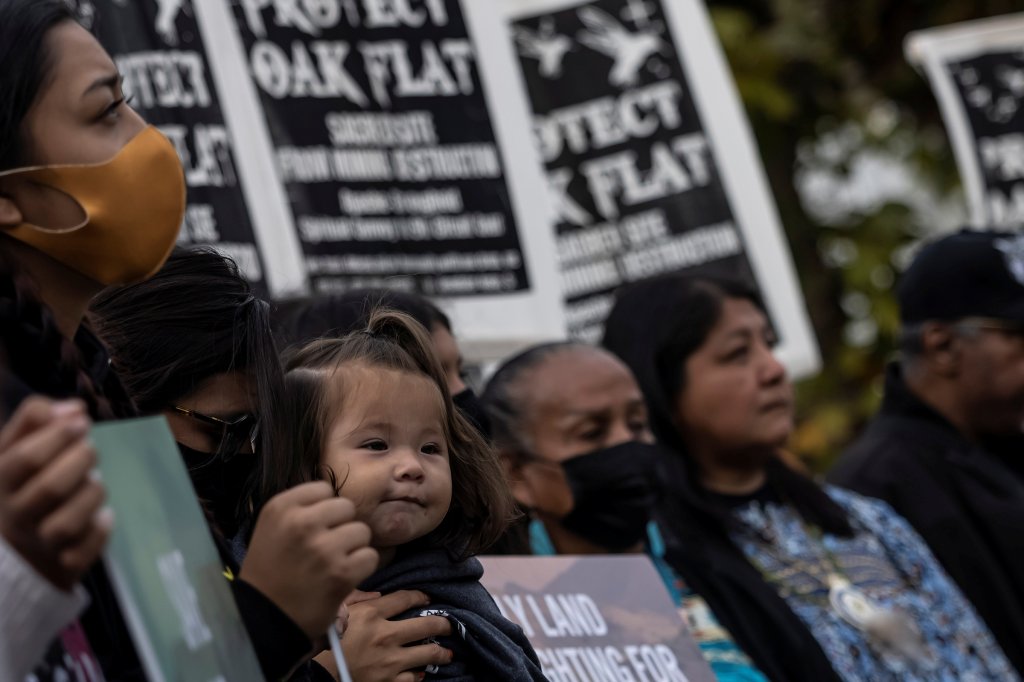

Yet fears about the effects of climate change are escalating the pressure on local communities to get out of the way of mines, says Thea Riofrancos, an associate professor of political science at Providence College who studies mining and the green energy transition. She and other scholars have questioned whether projections that the world will face lithium shortages by 2025 are accurate; recycling more batteries and transitioning away from private vehicles to more public transportation, for example, could reduce our long-term need for lithium-ion energy storage.
“We should think about what is driving this demand, why does this rush feel so intensive, why is there not a version where we are going to try and do this transition with the least amount of mining possible?” Riofrancos says.
Most environmentalists agree that the 1872 mining law needs to be updated and there are several bills in Congress that would do so. The Clean Energy Minerals Reform Act of 2023, for example, introduced by Sen. Martin Heinrich (D-NM) in May, would require more tribal consultation and change how mining is approved on federal lands.
Finding a way to mine in the U.S. could help address a moral quandary, that we consume these materials but ask other countries to bear the brunt of their extraction, says Boulanger, with IRMA.
“There’s an argument to be made that if we’re going to use these materials, and we live in the most consumptive country in the world, we shouldn’t be making other countries be the bank account of our natural resources,” she says.
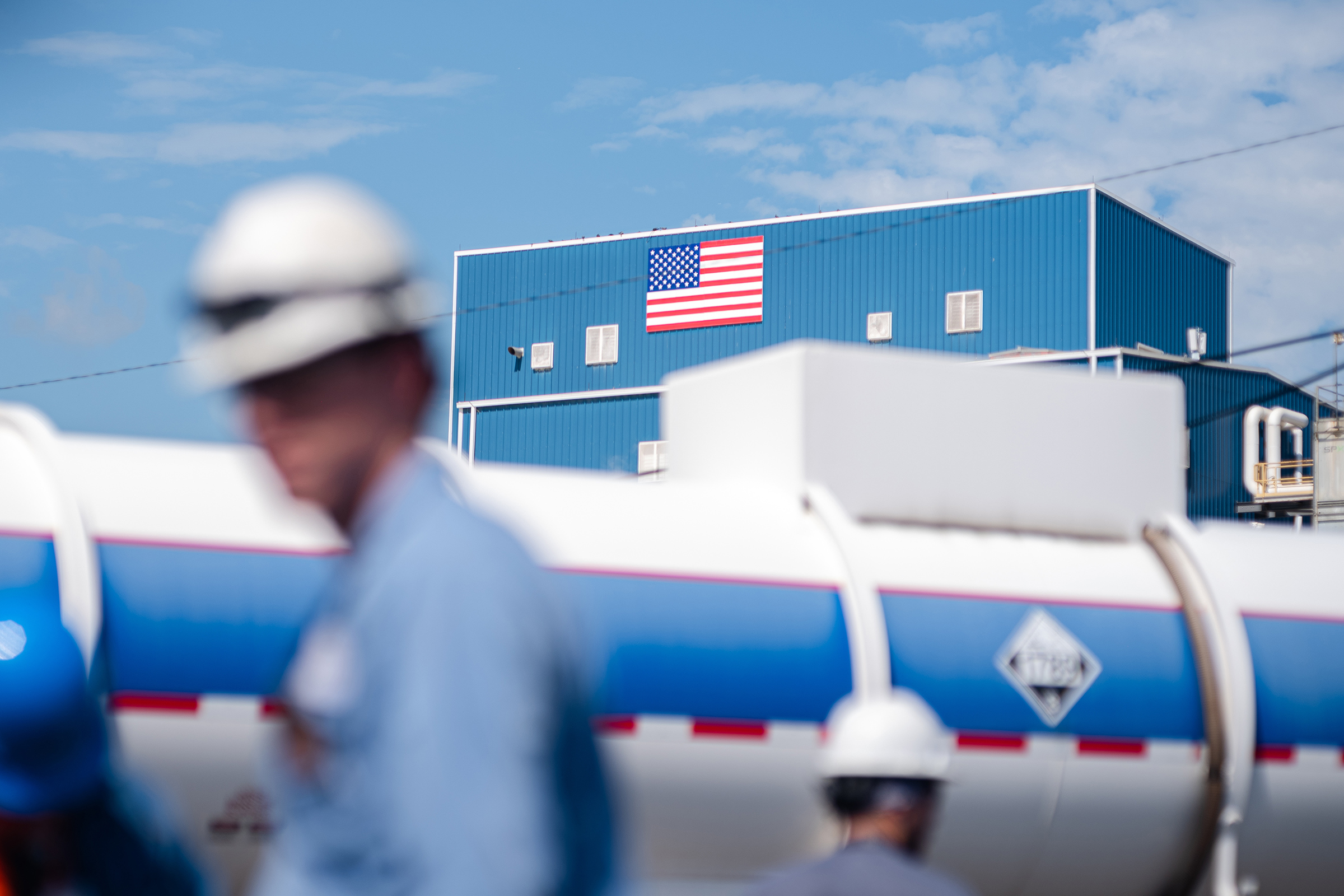
If lawmakers and regulators can’t agree on how to mine on U.S. soil, it could leave the U.S. susceptible to essentially outsourcing its mining problems to less-regulated countries. For example, last October, the Department of Energy used the Bipartisan Infrastructure Law to give a $141.7 million grant to Piedmont Lithium, which is building a plant in Tennessee to expand U.S. supply of lithium hydroxide, used in long-range batteries for electric vehicles. In March, Blue Orca Capital, a hedge fund, said it was “shorting,” or betting against the stock of Piedmont Lithium, alleging that the spodumene the firm plans to refine into lithium at its Tennessee facility was guaranteed by bribes to the son of a high-level politician in Ghana—“because of corruption,” those raw materials are likely to never come to fruition, the hedge fund says. Piedmont denies the allegations and says in a statement provided to TIME that the Minerals Income Investment Fund of Ghana told the company that it has valid licenses and permits for all its current activities.
Most of the proposed critical materials mines in the U.S. are not near a big population center—or economic activity, and some communities are in favor of a mine for the jobs it would create. But the proposed locations could instead lead to situations where sparsely populated communities don’t learn about a planned mine until it’s too late to stop it. “It can feel really fast—all of a sudden an enormous project is being proposed next door to you, it took years for the company to prospect but you didn’t hear about it ‘til now,” says Riofrancos.
The Freemans’ mine is not one of these projects. Though it is five miles from the nearest town, Maine is going through an extensive review process to decide whether to let the couple keep digging. Earlier in 2023, there were seven bills in the legislature regarding the potential of mining lithium in Maine. Lawmakers ultimately settled on legislation that may open the door to extracting the Freemans’ lithium by allowing larger open pit metal mines, so long as developers can prove they won’t pollute groundwater and the local environment. But the new law will require changing the state’s mining regulations, which may mean it could be years before the couple is able to start digging in earnest.
The Freemans say their mine would not pollute the surrounding land and water, as the chemical composition of the crystals and the rocks around them is such that they would not dissolve into dangerous acid when exposed to air and water. Geologists that TIME/Maine Monitor spoke with agree with that assessment. Further, the crystals, says Mary, would be shipped out of state in large chunks for processing, so there would be no chemical ponds or tailings.
Many geologists agree that the Freemans’ proposal would not be as disruptive as other proposed mines across the country. Other metals (like nickel, silver, and zinc) typically occur in bands of rock deep below the surface that contain iron sulfides, which create sulfuric acid when exposed to air and water, polluting waterways for decades, a phenomenon known as acid mine drainage. Some spodumene crystals at Plumbago North, by contrast, have been naturally exposed to air and water for hundreds of millions of years and not broken down.
On a visit to the test quarry this spring, Gary Freeman pointed out one large piece of spodumene lying at the bottom of a nearby brook, the water over it rushing fast and clear, not the rusty orange of an acid-contaminated stream. (The waterway is known, fittingly, as Spodumene Brook.) “The water is so good Poland Spring wants to bottle it and sell it,” says Mary.
Still, Morrill, of Earthworks, says there’s just not enough research about the effects of hard rock spodumene mining to say for sure that the mine wouldn’t harm the environment. Since so many people in Maine depend on recreation and tourism for their livelihoods, she says, it makes the most sense to keep protective regulations in place.
Maine’s Department of Environmental Protection has rejected the Freemans’ request to consider the land a quarry, and is instead classifying spodumene as a metallic mineral. As the law stands, the Freemans will have to apply for permits under Maine’s 2017 Metallic Mineral Mining Act, a costly process (the application processing fee alone is $500,000) that would take years.
Meanwhile, the local community is divided. After all, in Maine it’s not difficult to find people still living with the long-term damage of older mines. On the other hand, many Mainers are pragmatic and understand the state has long, dark winters, and will need battery storage for any renewable energy it generates on sunny or windy days. The alternative is to continue relying on fossil fuels, which would exacerbate climate change.
Read more: Tesla Co-Founder JB Straubel Has a Fix for the Battery Problem
Myles Felch, curator at the Maine Mineral and Gem Museum, is one of these practical Mainers. He was raised in Union, where a groundswell of opposition has formed to resist a proposal by Canada-based Exiro Minerals to look for nickel near a beloved local pond. Felch isn’t thrilled with the prospect, but also knows we can’t continue to be so detached from the minerals we use in our daily life.
“I love the place where I grew up and I wouldn’t want anything to ever happen to it,” says Felch. But “you need mineral resources. Most people were probably texting ‘stop the mine’ with a nickel cobalt battery in their phones.”
More Must-Reads From TIME
- The 100 Most Influential People of 2024
- Coco Gauff Is Playing for Herself Now
- Scenes From Pro-Palestinian Encampments Across U.S. Universities
- 6 Compliments That Land Every Time
- If You're Dating Right Now , You're Brave: Column
- The AI That Could Heal a Divided Internet
- Fallout Is a Brilliant Model for the Future of Video Game Adaptations
- Want Weekly Recs on What to Watch, Read, and More? Sign Up for Worth Your Time
Contact us at letters@time.com
